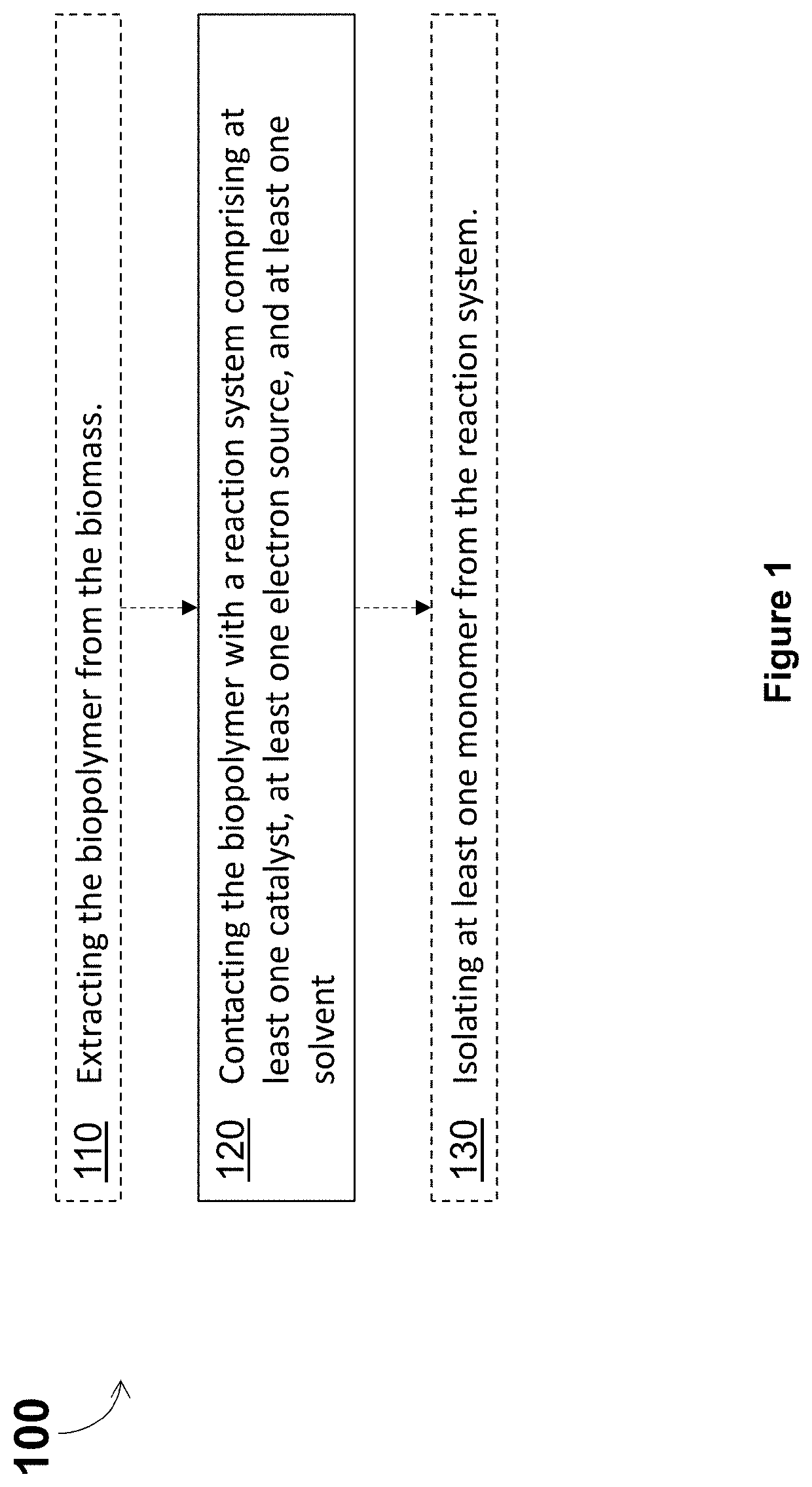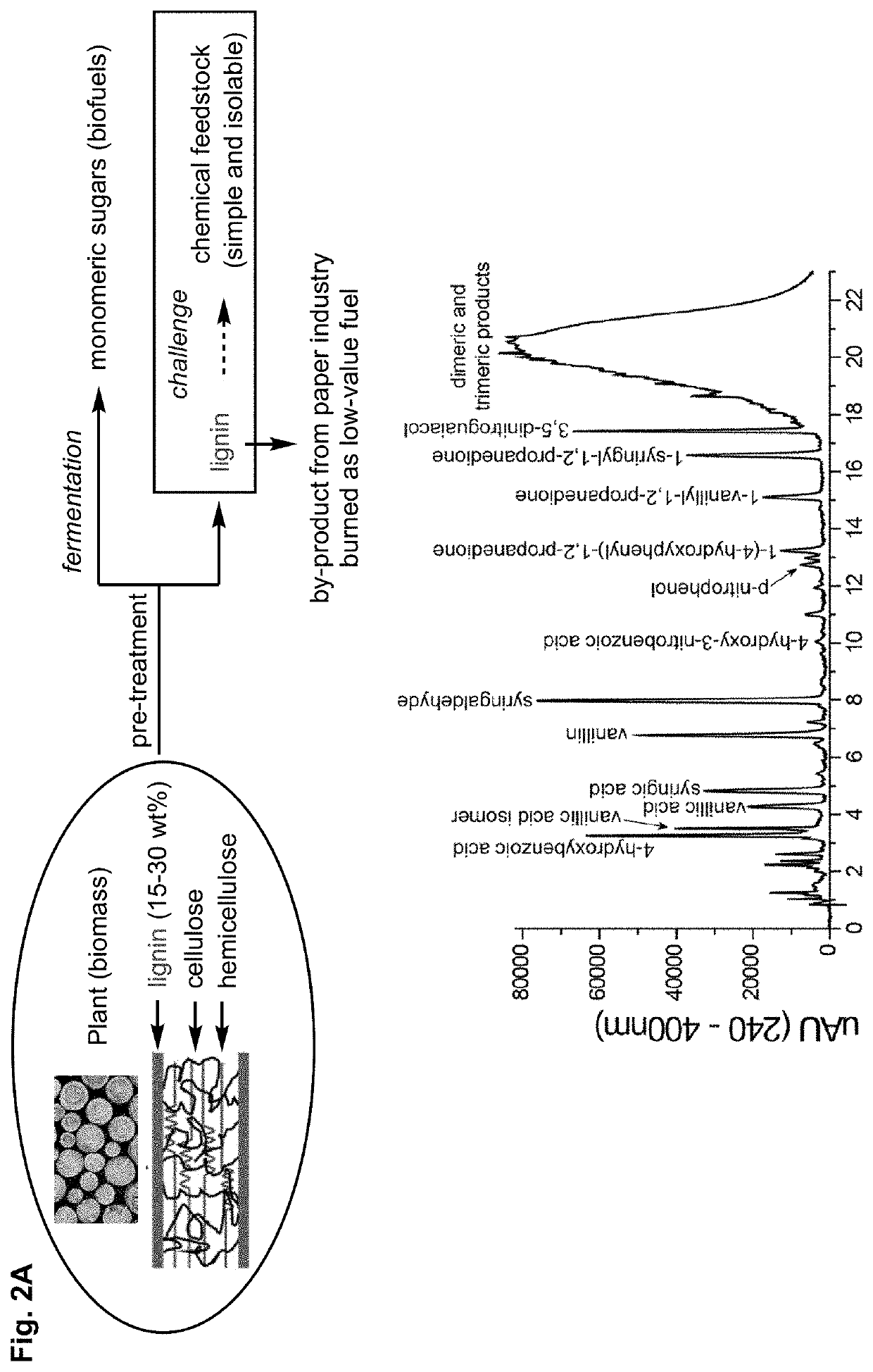Depolymerization and valorization of a biopolymer
- Summary
- Abstract
- Description
- Claims
- Application Information
AI Technical Summary
Benefits of technology
Problems solved by technology
Method used
Image
Examples
experimental examples
[0121]The invention is further described in detail by reference to the following experimental examples. These examples are provided for purposes of illustration only, and are not intended to be limiting unless otherwise specified. Thus, the invention should in no way be construed as being limited to the following examples, but rather, should be construed to encompass any and all variations which become evident as a result of the teaching provided herein.
[0122]Without further description, it is believed that one of ordinary skill in the art can, using the preceding description and the following illustrative examples, make and utilize the systems practice the claimed methods of the present invention. The following working examples therefore, specifically point out the preferred embodiments of the present invention, and are not to be construed as limiting in any way the remainder of the disclosure.
example 1
zed Reductive Valorization of Lignin Model Compounds
[0123]Current catalytic methods to depolymerize lignin (FIG. 2A) afford a mixture of different products, which has prevented the commercialization of these methods (FIG. 2B). This intrinsic limitation stems from strategies that only target the β-O-4 linkage. In contrast, the lignin structure features non-regular patterns of moieties, including β-β, β-5, and 5-5 linkages, in addition to the β-O-4 linkage (FIG. 3).
[0124]Lignin is naturally synthesized from one class of compounds, p-hydroxycinnamic alcohol derivatives (monolignols), which are biosynthetically derived from phenylalanine and tyrosine (Vanholme, et al., Plant Physiology 2010, 153, 895-905). The biosynthesis of lignin involves polymerization of three monomers, sinapyl alcohol, coniferyl alcohol, and p-coumaryl alcohol, to afford syringyl (S), guaiacyl (G), and p-hydroxyphenyl (H) units, respectively (Matsushita, et al., Royal Society Open Science 2019, 6, 190445; Tobimats...
example 2
iosynthetic Depolymerization of Authentic Lignin Samples
[0130]The facile reactivity of Ti catalysts in reductive cleavage of the model substrate of the β-O-4 linkage encouraged an investigation into their utility in depolymerizing authentic lignin samples. Cleavage of the β-O-4 linkage is expected to result in phenol radicals that are intermediates for oxidative polymerization in lignin biosynthesis pathways. Under reductive conditions, the reverse-biosynthetic pathway could occur to disconnect the polymers into smaller fragments (FIG. 2B and FIG. 8). In the β-β resinol linkage, phenol radical 6 is in resonance with intermediate 7, which can undergo β-scission to break the ether bonds and form intermediate 8. A sequence of proton and electron transfer steps cleaves the C—C bond and affords phenol radical 9. The resulting p-hydroxycinnamic alcohol product is further reduced to generate allyl benzene derivatives. In the β-5 linkage, the phenol radical resonance structure 11 undergoes ...
PUM
| Property | Measurement | Unit |
|---|---|---|
| Temperature | aaaaa | aaaaa |
Abstract
Description
Claims
Application Information
 Login to View More
Login to View More - R&D
- Intellectual Property
- Life Sciences
- Materials
- Tech Scout
- Unparalleled Data Quality
- Higher Quality Content
- 60% Fewer Hallucinations
Browse by: Latest US Patents, China's latest patents, Technical Efficacy Thesaurus, Application Domain, Technology Topic, Popular Technical Reports.
© 2025 PatSnap. All rights reserved.Legal|Privacy policy|Modern Slavery Act Transparency Statement|Sitemap|About US| Contact US: help@patsnap.com



